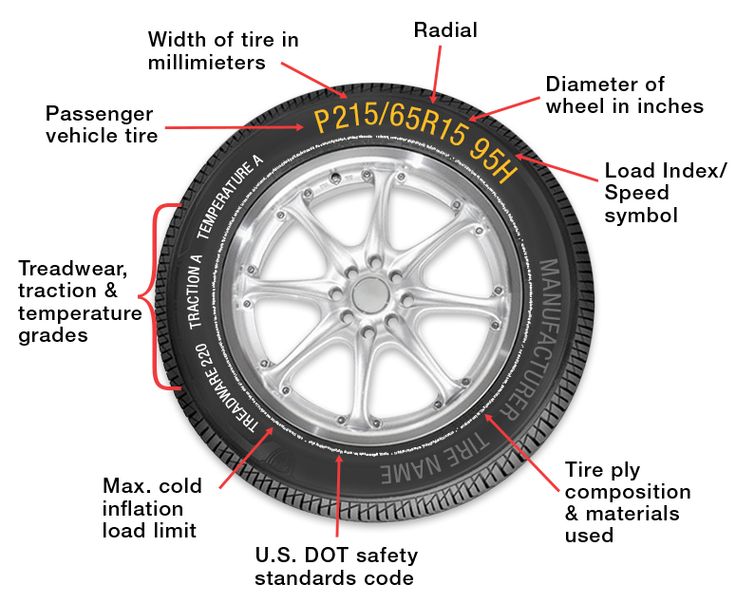Tire alignment, also known as wheel alignment, can help your tires perform properly and help them last longer. It can also improve handling and keep your vehicle from pulling in one direction or vibrating strangely on the road.
Alignment refers to an adjustment of a vehicle’s suspension – the system that connects a vehicle to its wheels. It is not an adjustment of the tires or wheels themselves. The key to proper alignment is adjusting the angles of the tires which affects how they make contact with the road.
There are a couple ways to tell if your car needs a tire alignment. If you've noticed one or more of these indicators, you should have your alignment checked by a licensed service technician immediately.
Uneven tread wear
Vehicle pulling to the left or right
Your steering wheel is off center when driving straight
Steering wheel vibration
When a technician checks your tire alignment, he or she is mainly concerned with three things:
This is the inward or outward angle of the tire when viewed from the front of the vehicle. Too much inward or outward tilt, also known as negative and positive camber, respectively, indicates improper alignment and will need to be adjusted. Worn bearings, ball joints, and other wheel-suspension parts may contribute to camber misalignment.
Distinct from camber alignment, toe alignment is the extent to which your tires turn inward or outward when viewed from above. If that’s confusing, just stand up and look down at your feet. Angle them inward toward the center of your body. When the tires on your car are angled the same way (remember, we’re thinking in terms of birds-eye-view), we call this toe-in alignment. Angle your feet outward and you have toe-out alignment. Both require adjustment.
Your caster angle helps balance steering, stability, and cornering. Specifically, it’s the angle of your steering axis when viewed from the side of your vehicle. If you have positive caster, the steering axis will tilt toward the driver. Negative caster, on the other hand, means the steering axis tilts toward the front of your vehicle.
If you have positive caster, the steering axis will tilt toward the driver. Negative caster, on the other hand, means the steering axis tilts toward the front of your vehicle.
Improper wheel or tire alignment can cause your tires to wear unevenly and prematurely. Here are some specific types of undue tread wear attributable to misalignment:
Tires are “feathered” when the tread is smooth on one side and sharp on another. This is usually a sign of poor toe alignment.
This strain of tread wear means the inside or outside of the tread is significantly more worn than the center of the tread. As its name implies, positive or negative camber causes this type of wear.
This happens when one side of your tread blocks wears down more quickly than the other in a circumferential direction. When you run your hand over the tread, it will look and feel like saw teeth when viewed from the side.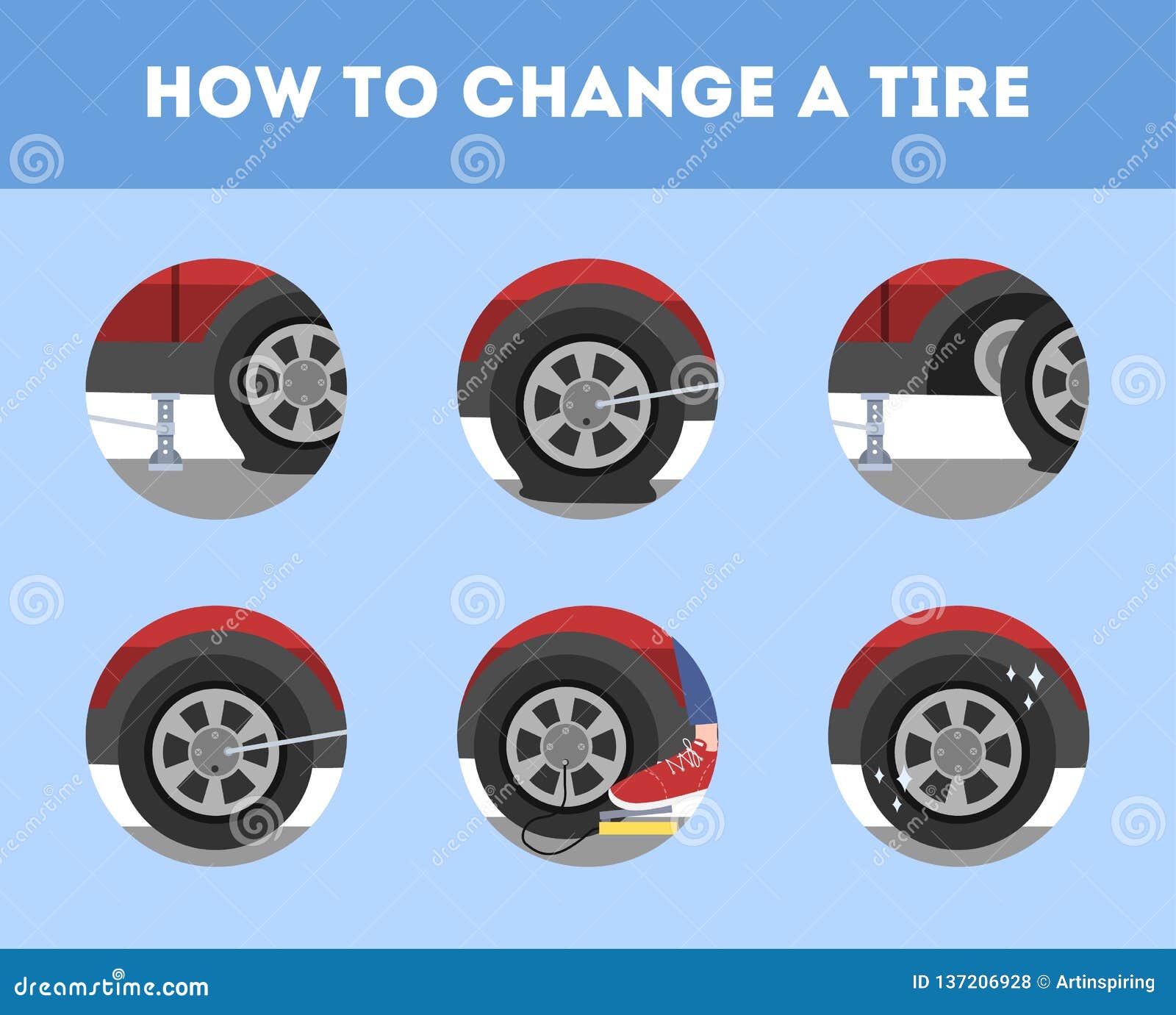 Heel/toe wear could be a sign of under inflation and/or lack of rotation.
Heel/toe wear could be a sign of under inflation and/or lack of rotation.
If you’re experiencing any of these unusual wear patterns, you should have a technician check your alignment. While tire wear prevention is a good reason to keep your wheel alignment in check, the consequences of misalignment can also play out in overall vehicle performance. A car that pulls to one side or steers erratically, for example, probably has an alignment problem.
Distinct from tire alignment, tire or wheel balancing refers to compensation for any weight imbalances in the tire/wheel combination and is often performed in conjunction with wheel alignment. There are two basic types of tire/wheel imbalance that need correction – static (single plane) and dynamic (dual plane).
Static balance addresses balance on only one plane – vertical movement which can cause vibration. A dynamic imbalance, on the other hand, addresses balance in two planes – vertical movement and lateral movement . Both types of imbalance require the use of a special balancing machine to help even things out.
Both types of imbalance require the use of a special balancing machine to help even things out.
To begin balancing your tires, a technician will mount them on the correct rims and adjust the pressure to optimal inflation. Then each tire goes on the center bore of a balancing machine. The machine spins the tire at a high speed to measure the wheel/tire combination imbalance. It signals how much weight the tech should add to balance out the tire and the areas where said weight is needed.
Tire balancing is essential for proper tire care for the same reason as wheel alignment: prevention of premature tread wear. Having tires aligned and balanced every 5,000 to 6,000 miles can help maximize their lifespan and overall performance.
Jessica Shea Choksey | Nov 09, 2020
Vehicle alignment refers to a mechanical procedure that adjusts the suspension to its proper configuration, correctly positioning the axles and wheels to allow the tires to make even contact with the road surface. It also ensures that a vehicle's wheels are "squared up" to one another.
It also ensures that a vehicle's wheels are "squared up" to one another.
A vehicle comes out of alignment gradually over time from treading over minor imperfections on the roadway. Or, it can happen suddenly from a single impact such as driving over a deep pothole or curb. Outside of such an occurrence, you should perform an alignment on your vehicle at regular intervals, as directed by the owner's manual.
When a suspension is out of alignment, the effects are evident. The vehicle may pull to one side, suffer from uneven tire tread wear, and feel less precise in terms of steering. If you disregard these symptoms, the alignment can progressively worsen and affect the vehicle's overall handling dynamics and safety.
Want to Take Action?
Want to Take Action?
Shop Cars for Sale Online
Want to Dive Deeper?
Want to Dive Deeper?
Compare Cars Online
WANT TO MAXIMIZE YOUR PURCHASING POWER?
WANT TO MAXIMIZE YOUR PURCHASING POWER?
Find Local Incentives and Rebates on New Cars
Thank You
You are now subscribed to the J.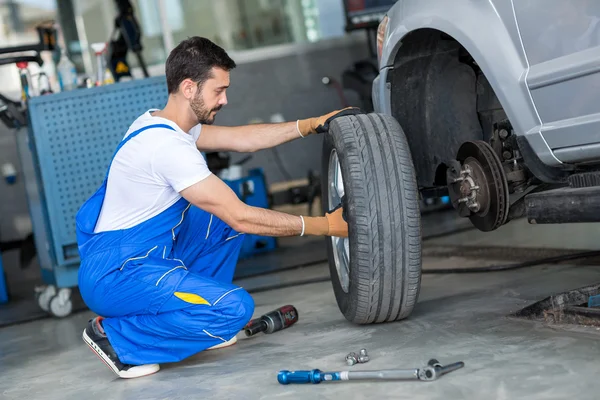 D. Power Cars Newsletter.
D. Power Cars Newsletter.
Explore new car previews
2023 Honda Accord Preview
The 2023 Accord is the 11th-generation version of the car that first went on sale in America in 1976, and it is a far different vehicle from the one that made the nameplate a household name.
Read the full review
2023 Honda Pilot Preview
The fourth-generation 2023 Honda Pilot is about to go on sale, and Honda substantially upgrades it over the popular third-generation model it replaces. Honda will offer the redesigned 2023 Pilot in Sport, EX-L, TrailSport, Touring, and Elite trim levels in December 2022.
Read the full review
2024 BMW X5 Preview
Currently in its third generation, the BMW X5 has been a luxury SUV mainstay for over 20 years. The X5 gets a significant update for 2024, bringing new electrified powertrain technology with better power and updated interior tech with a curved display.
Read the full review
Read all articles
Most often, we ourselves are to blame for the fact that the tires become unusable. But this can be avoided.
You have never seen such tires: even the police were surprised
In the process of using the tires, various damages can occur, most of which are the fault of the driver. As a result, rubber is wasted, and since the law prohibits the use of different tire models on the same axle, you have to spend money on replacing the second tire.
The most common damage is puncture . This is the most harmless type of damage, but only if you notice it in time and repair it right away. It is absolutely impossible to drive on a flat tire, even a couple of meters! The damage caused by running on a flat tire or low pressure is catastrophic. This causes the sidewalls to deform more than they should, which causes the tire to overheat, delaminate, and the carcass becomes unusable due to broken cords. As a result, the tire will have to be thrown out. In addition, the edge of the rim can also be damaged.
This causes the sidewalls to deform more than they should, which causes the tire to overheat, delaminate, and the carcass becomes unusable due to broken cords. As a result, the tire will have to be thrown out. In addition, the edge of the rim can also be damaged.
There are two types of punctures: with and without cord damage. To determine this, it is necessary to remove what pierced it. If the edges of the puncture tightly converge, then the cord is not damaged and it will be possible to repair the tire without removing it from the disk. Otherwise, if the edges do not converge, you will have to disassemble the wheel and make repairs to strengthen the frame from the inside. Alternatively, in the field and in the absence of a spare wheel, such a puncture can be repaired without removing the tire from the disk, after which you can carefully drive to a tire fitting or garage and make a full repair.
Is it possible to inflate a wheel without a compressor - the experiment "Behind the wheel"
When repairing, the puncture site must be cleaned and marked.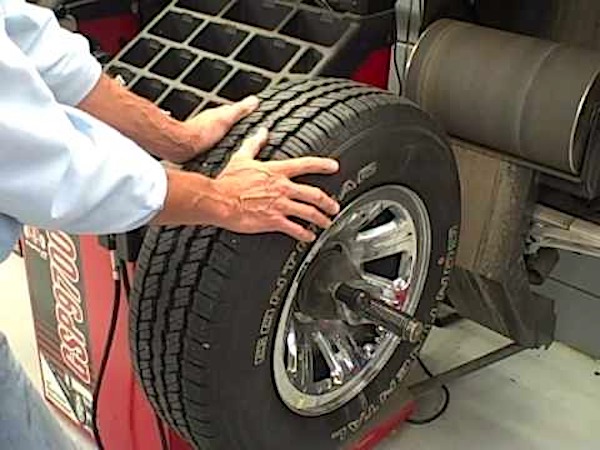 Further, it all depends on what kind of repair kit you have - as a rule, instructions are attached to them. There are sealants that are poured into the tire through the nipple, after which the wheel turns with the puncture down and the substance seals the hole. Repair with a tourniquet or insert is somewhat more complicated, but also more durable: the edges of the hole are polished with a special tool, after which the tourniquet treated with a special compound must be inserted into the tire through a puncture with a special awl, pulled out (not completely) out and cut flush with the surface.
Further, it all depends on what kind of repair kit you have - as a rule, instructions are attached to them. There are sealants that are poured into the tire through the nipple, after which the wheel turns with the puncture down and the substance seals the hole. Repair with a tourniquet or insert is somewhat more complicated, but also more durable: the edges of the hole are polished with a special tool, after which the tourniquet treated with a special compound must be inserted into the tire through a puncture with a special awl, pulled out (not completely) out and cut flush with the surface.
In case of cord damage due to a puncture, the tire must be removed from the rim in order to install a reinforced patch with additional cord on its inner surface. One of the sides of such patches has an adhesive layer that promotes cold vulcanization. After such a repair, wheel balancing will be required. To seal punctures from the inside, patches in the form of a mushroom are also used, with a leg that goes into the puncture. Such patches are also covered with a special adhesive composition for cold vulcanization.
Such patches are also covered with a special adhesive composition for cold vulcanization.
Cuts or holes , unlike punctures, are not repairable, as they violate the integrity of the frame, which can no longer be strengthened. In addition, breakdowns are always sudden and occur on the go: the tire abruptly loses pressure and before the car comes to a complete stop it has time to make several turns "on the rims", which breaks the cord and destroys the layers. It is not recommended to use such a weakened tire, even if it was possible to repair and strengthen the rupture or cut, in the future.
8 tire storage rules - do you follow them all?
Incorrect storage of tires can cause cracks . The danger of such damage is that moisture enters the cord through cracks, which renders the frame unusable. In addition, air can escape through cracks. Unfortunately, cracks are not repairable, and tires with them will not last long: sooner or later they will deform, become covered with swellings due to rusted and torn cord or because of driving with pressure below the recommended one.
Blisters or bulges can appear on a tire for a variety of reasons - it always happens due to a broken cord or delamination in the carcass. In the first case, an obstacle was hit and the impact broke the cord or the cord was cut through with a sharp object. In the second case, there is no damage on or near the hernia, which means that it appeared either due to a factory defect, or due to frequent driving with pressure below the recommended one. The danger of hernias is that they can explode at any time and provoke a skid, which will lead to an accident. If there is nothing to replace a tire with a hernia, then it is better to rearrange it to the rear axle and drive very carefully. Like fissures, a hernia cannot be repaired. Sometimes small blisters resulting from impacts or cuts are reinforced with reinforced patches, but there is no guarantee that the tire will not explode. Therefore, tires with hernias are recommended to be replaced immediately.
Tire blackening - 6 ways to polish your tires.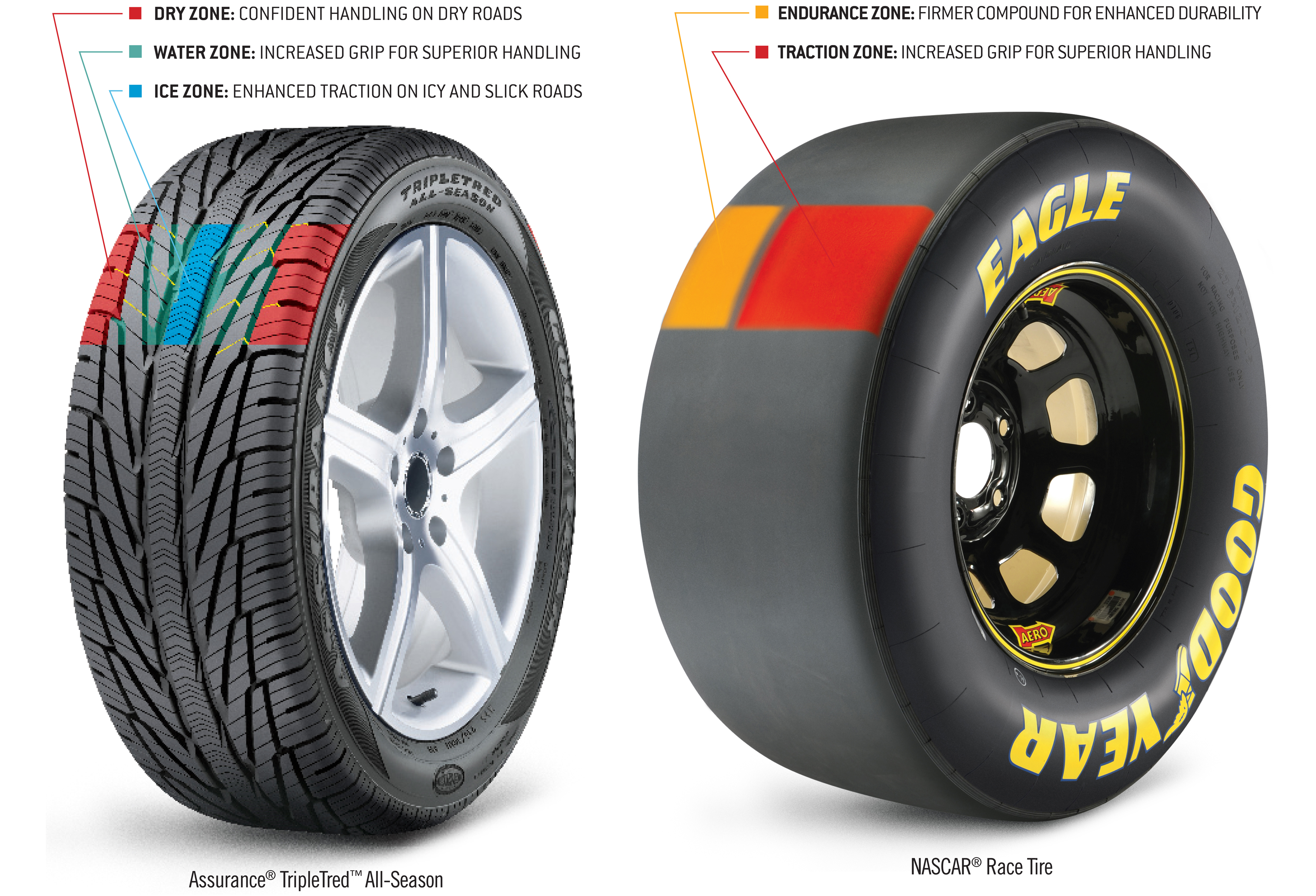 Inexpensive!
Inexpensive!
Tire sidewalls can be damaged by rubbing against curbstones or the asphalt edge when driving onto the side of the road. If you are prone to such a driving style, then it is recommended to inspect the inner and outer sidewalls from time to time and, if abrasion is found, swap the wheels in order to prevent the cord from being exposed - the rubber thickness on the sidewalls is small (1.5-3 mm), and it can be rubbed to the frame very quickly.
Often the cause of tire damage can be poor-quality tire fitting , during which the bead ring was damaged. In this case, the tire loses its geometry and “sits” crookedly on the disk - it writes “eights” during rotation, and lateral vibration appears during the ride. It is impossible to repair such a tire - you need to replace it with a serviceable one as soon as possible, until it damages the suspension: traction, hubs and bearings.
You can find out whether you use tires correctly and what invisible damage they have received by the characteristic wear of the tread, the varieties of which are collected for convenience in the table:
Shoulder wear on both sides
Driving with less than recommended tire pressure.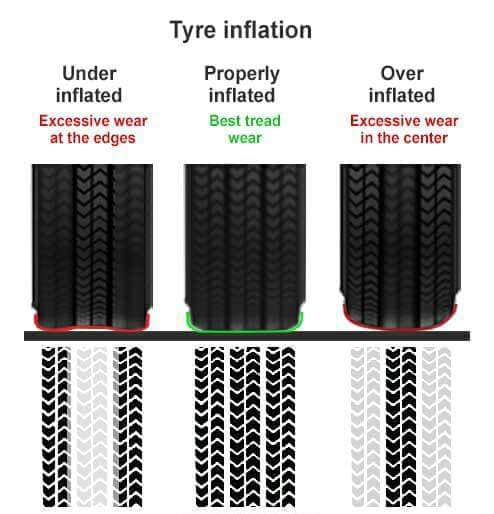
Inflate the tires to the pressure recommended by the automaker (a plate with recommendations is attached in the driver's door opening) and find the cause of the fall: puncture, cracks, hernia, nipple, rust on the rim of the disc in the place where the tire fits, etc.
Center wear
Tire pressure too high.
Reduce the pressure to the recommended (indicated on the tablet in the doorway of the driver)
Distance in the form of rings and furrows
can be found on trailers or rear wheels of pickups and vans due to vibrations and vibrations and vibrations and vibrations and vibrations due bouncing at high speeds.
Changing wheels on a loaded axle to equalize wear, driving with a heavier load.
Chipped wear with cuts
Frequent wheel spin on rocky surfaces.
Move the wheels to a non-driving axle, use the gas pedal more carefully when starting to move.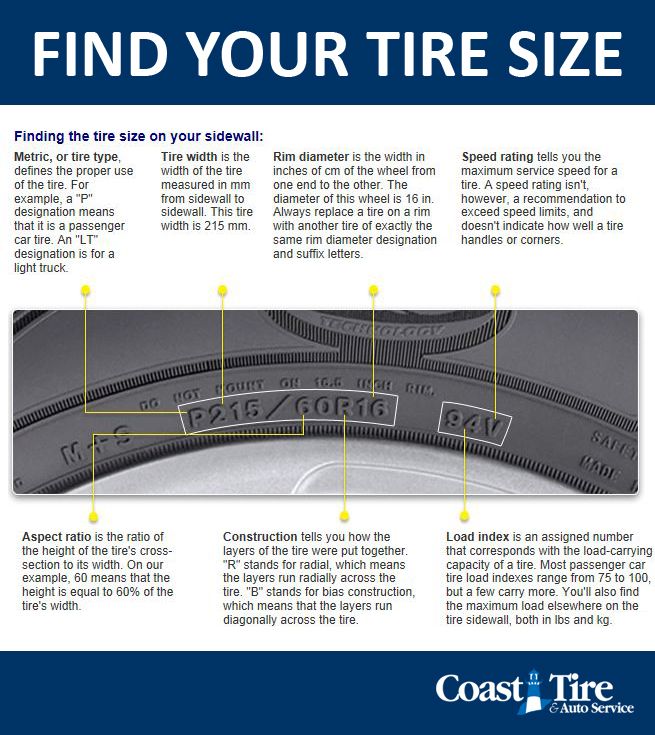
Photo: Petr Urbanek / Unsplash
The country relies on a fleet to transport consumer goods, food and building materials from coast to coast. The operation of such a fleet of trucks is inevitably associated with the maintenance of tires on which each load travels. Without proper care and maintenance, rubber tread wears out much faster than it should, forcing companies to buy and replace tires at an increasing cost. However, a little extra time and effort invested in tire maintenance protocols can pay big dividends in the long run.
Contents
The only thing you can do to ensure the long life of your tires is to make sure they are inflated to the correct pressure. Tires are designed to perform optimally when the air pressure inside is equal to or close to the prescribed inflation pressure. If the pressure deviates from this value by 10% in any direction, the tire and its performance may be adversely affected.
If the pressure deviates from this value by 10% in any direction, the tire and its performance may be adversely affected.
The first step in keeping your tires properly inflated is to make sure they all have quality valve caps. In a commercial fleet, flow through the valve caps can facilitate normal inflation. Technicians can fill tires without removing each cap, which can be especially helpful when filling hard-to-reach inner tires.
When tires do need refueling, it is best to use clean, dry air. Moist air can cause premature failure of the rubber and steel rings on the inside of the tire. Since air compressors are commonly used to inflate tires with outside air, consider adding built-in filters and dehumidifiers to clean the air and remove excess moisture before it reaches the tire.
Aligning these large trucks is much more difficult than adjusting the four wheels of a passenger car. Proper alignment includes alignment of both tractor and trailer. If one of them is off, it will affect handling, ride and tire wear on the rest of the car.
If one of them is off, it will affect handling, ride and tire wear on the rest of the car.
As wear patterns are identified and adjustments are made by fleet technicians, it is important to keep a good maintenance record. These records serve as a kind of health history for each tire. For further maintenance, previous rotations, alignments and adjustments should be taken into account. The best way to track information should be the one that works best for your fleet. If you don't currently have a working system, you can look into the currently available tire tracking software. Tires can be tagged with a scannable barcode or RFID chip to make each one easily identifiable and traceable.
Studies have shown that aggressive driving behavior is directly related to increased tire wear and significantly reduces tire life. Habits such as speeding, braking hard, cornering quickly, and curbing can be costly if fleet drivers engage in these behaviors on a regular basis. Without getting into a truck with every driver, it can be hard to know how serious the problem is. However, recent advances in technology can detect speeding, hard braking or cornering. Fleet owners can use the same software as car insurance companies to promote safer driving. This software identifies individuals who may need further training to avoid excessive tire wear.
Without getting into a truck with every driver, it can be hard to know how serious the problem is. However, recent advances in technology can detect speeding, hard braking or cornering. Fleet owners can use the same software as car insurance companies to promote safer driving. This software identifies individuals who may need further training to avoid excessive tire wear.
Analyzing scrap tires from your fleet can also be a powerful tool for identifying common problems in your fleet. The pattern of wear and the cause of failure can tell a compelling story to an experienced technician. From a worn tread, a tire specialist can tell if the tires are spinning often enough or if drivers brake too hard, causing flat spots on the tread. These hints can open up opportunities for training drivers or fleet maintenance teams.
Another important part of teaching truck drivers how to drive for optimal tire preservation is to involve them in caring for the truck and its tires. Invite them to take part in a pre-trip inspection of their tractor, trailer, and tires.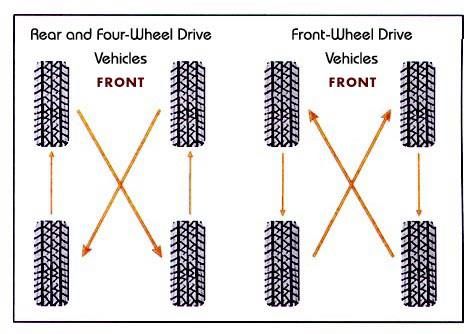 This procedure can help them visualize the problem, take ownership of their equipment, and identify potential problems before they lead to roadside emergency calls.
This procedure can help them visualize the problem, take ownership of their equipment, and identify potential problems before they lead to roadside emergency calls.
Even a tire of the right size is not a universal solution. Tires are often designed for specific purposes. One tire can do great in the snow, while the other is designed for long distance riding. Another can be fitted with a tread that maximizes fuel efficiency. The best tires for your fleet will most likely match the driving conditions and distance your drivers cover.
Another property to consider is whether the tire carcass is designed with retreading in mind. Being able to retread each tire multiple times will not only save money on tires, it will also minimize rubber waste. When your tires reach the end of the road, find a rubber processing plant that accepts large truck tires. Making tires easier to recycle can cost a little more on your part, and you'll prevent environmental damage by seeing that the rubber is being used productively.